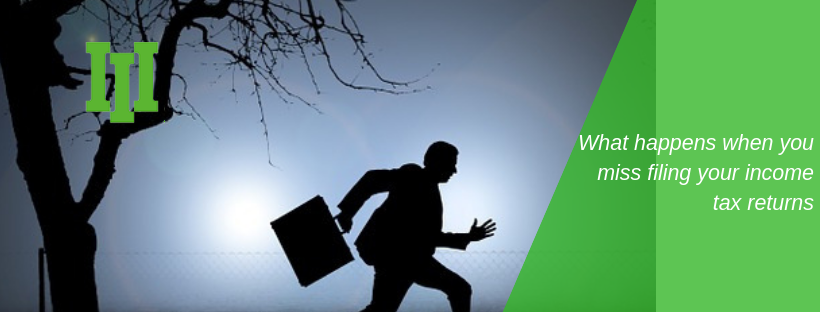SHARE
Everyone has read and heard the statement, “Mutual Funds are subject to market risk. “How do we evaluate this market risk now?” You wouldn’t be in a good position to appraise the funds on their face value unless you know the ins and outs of the trading business. In 2015, the market regulator, SEBI, made it mandatory for all fund companies to display a riskometer for all of their Mutual Fund Schemes to make risk assessment at the fund level easier for investors. The riskometer allows investors to analyse the risk associated with each Mutual Fund Scheme. SEBI had a three-level risk metre that didn’t do a pertinent job, therefore it was rebuilt to a six-level risk metre to properly categorise risk.
Understanding the Riskometer
The Association of Mutual Funds in India (AMFI) released recommendations on how each fund should be classed under different risk classifications. It resembles a speedometer, with different colours denoting different risk stages.
The risk classification for debt mutual funds is divided into three categories, as shown below:
- Credit Risk – Determined by each security’s rating
- Interest Rate Risk – Determined by portfolio’s duration
- Liquidity Risk – Determined by Credit Ratings and Debt Instrument Structure
The risk classification for equity mutual funds is divided into three categories, as shown below:
- Market Capitalization
- Volatility
- Impact Cost
Let’s take a closer look at the different risk levels shown in the riskometer.
- Low-Risk
Funds – This category is color-coded green, indicating that the principal amount and returns are quite safe. Gilt funds / short term funds which have a maturity of less than 90 days , fall into this category since they have the lowest risk to return benefit.
Suitable For – Risk-averse investors who seek a steady income stream but don’t mind low risk, low return growth.
- Moderately Low-Risk
Funds – The medium-risk category is light green, and represents funds with a moderately low risk of return. Short-term Funds with a maturity window between 91days and 3 years fall into this category.
Suitable for – Investors who are investing with protection of capital as a goal and are happy with relatively low returns.
- Moderate Risk
Funds – It is in yellow, indicating that the capital and returns are at risk. Arbitrage Funds and Conservative Hybrid Funds fall into this category. They are excellent for medium-term to long-term investing.
Suitable for – Investors who are willing to invest for 2 to 3 years and are willing to bear modest risk in exchange for moderate profits.
- Moderately High -Risk
Funds – The principal amount and returns are marked in orange to indicate heightened risk. There are a number of funds available to investors that invest in companies with a large market capitalization or Multi Cap Funds that allow you to choose between Large Cap, Mid Cap, or Small Cap companies.
Suitable For – Investors that are prepared to commit to a 3 to 4 year investment horizon and seek lucrative returns with a moderately high risk profile.
- High -Risk
Funds –This is orange in color, indicating a relatively high risk. Investors can consider investing in mid-sized companies which have the potential to provide good returns if invested over the long run. These include sectoral funds, international funds and Microcap funds.
Suitable For – This is an excellent investment option for individuals that have a time horizon of 4 to 5 years and are willing to take on more risk in anticipation of a higher return.
- Very High Risk
Funds – The risk level is outlined by a Red color code to indicate the highest risk level. Investors should consider placing their money in Small Cap Funds where a majority of the money is invested in small companies that offer a possibility of higher return but at a very high risk.
Suitable For – Investors who are willing to take on an overly aggressive risk to make the most of their investment portfolios, when they invest for more than 5 years.
The Riskometer can be used to assess Mutual Fund Schemes in the financial market before you invest, especially if you are a novice investor. However, you should consider other criteria such as your financial goals, risk appetite, and time horizon when picking which funds to invest in. Do your research, evaluate the market, invest sensibly, and enjoy the rewards. Always consult your trusted financial planner to guide you towards investing for goal realization.
Start your personal wealth journey with us today!

Plan to Maximize Your Retirement Years
October 4, 20180 Comments
Leave a Reply
- 2019
- 2020
- Awards
- Banking
- Budget
- Cashflow Management
- CORPORATE
- Corporate Wellness
- Couple
- Cross Border Financial Planning
- Dreams
- FAQ
- FINANCE
- Financial Goal
- Financial Planning
- FINANCIAL TRANSITIONS
- FINANCIAL WELLNESS
- Goals
- Holidaying
- Housing
- Insurance
- Investment
- Market
- Money
- Mutual Funds
- NRI
- Portfolio
- Real Estate
- Retirement
- Risk Management
- Rupee
- Succession Plan
- Tax Planning
- Tax Return
- Technology
- Wealth Management
- Women
Categories
Everyone has read and heard the statement, “Mutual Funds are subject to market risk. “How do we evaluate this market risk now?” You wouldn’t be in a good position to appraise the funds on their face value unless you know the ins and outs of the trading business. In 2015, the market regulator, SEBI, made it mandatory for all fund companies to display a riskometer for all of their Mutual Fund Schemes to make risk assessment at the fund level easier for investors. The riskometer allows investors to analyse the risk associated with each Mutual Fund Scheme. SEBI had a three-level risk metre that didn’t do a pertinent job, therefore it was rebuilt to a six-level risk metre to properly categorise risk.
Understanding the Riskometer
The Association of Mutual Funds in India (AMFI) released recommendations on how each fund should be classed under different risk classifications. It resembles a speedometer, with different colours denoting different risk stages.
The risk classification for debt mutual funds is divided into three categories, as shown below:
- Credit Risk – Determined by each security’s rating
- Interest Rate Risk – Determined by portfolio’s duration
- Liquidity Risk – Determined by Credit Ratings and Debt Instrument Structure
The risk classification for equity mutual funds is divided into three categories, as shown below:
- Market Capitalization
- Volatility
- Impact Cost
Let’s take a closer look at the different risk levels shown in the riskometer.
- Low-Risk
Funds – This category is color-coded green, indicating that the principal amount and returns are quite safe. Gilt funds / short term funds which have a maturity of less than 90 days , fall into this category since they have the lowest risk to return benefit.
Suitable For – Risk-averse investors who seek a steady income stream but don’t mind low risk, low return growth.
- Moderately Low-Risk
Funds – The medium-risk category is light green, and represents funds with a moderately low risk of return. Short-term Funds with a maturity window between 91days and 3 years fall into this category.
Suitable for – Investors who are investing with protection of capital as a goal and are happy with relatively low returns.
- Moderate Risk
Funds – It is in yellow, indicating that the capital and returns are at risk. Arbitrage Funds and Conservative Hybrid Funds fall into this category. They are excellent for medium-term to long-term investing.
Suitable for – Investors who are willing to invest for 2 to 3 years and are willing to bear modest risk in exchange for moderate profits.
- Moderately High -Risk
Funds – The principal amount and returns are marked in orange to indicate heightened risk. There are a number of funds available to investors that invest in companies with a large market capitalization or Multi Cap Funds that allow you to choose between Large Cap, Mid Cap, or Small Cap companies.
Suitable For – Investors that are prepared to commit to a 3 to 4 year investment horizon and seek lucrative returns with a moderately high risk profile.
- High -Risk
Funds –This is orange in color, indicating a relatively high risk. Investors can consider investing in mid-sized companies which have the potential to provide good returns if invested over the long run. These include sectoral funds, international funds and Microcap funds.
Suitable For – This is an excellent investment option for individuals that have a time horizon of 4 to 5 years and are willing to take on more risk in anticipation of a higher return.
- Very High Risk
Funds – The risk level is outlined by a Red color code to indicate the highest risk level. Investors should consider placing their money in Small Cap Funds where a majority of the money is invested in small companies that offer a possibility of higher return but at a very high risk.
Suitable For – Investors who are willing to take on an overly aggressive risk to make the most of their investment portfolios, when they invest for more than 5 years.
The Riskometer can be used to assess Mutual Fund Schemes in the financial market before you invest, especially if you are a novice investor. However, you should consider other criteria such as your financial goals, risk appetite, and time horizon when picking which funds to invest in. Do your research, evaluate the market, invest sensibly, and enjoy the rewards. Always consult your trusted financial planner to guide you towards investing for goal realization.
Start your personal wealth journey with us today!
0 Comments












0 Comments